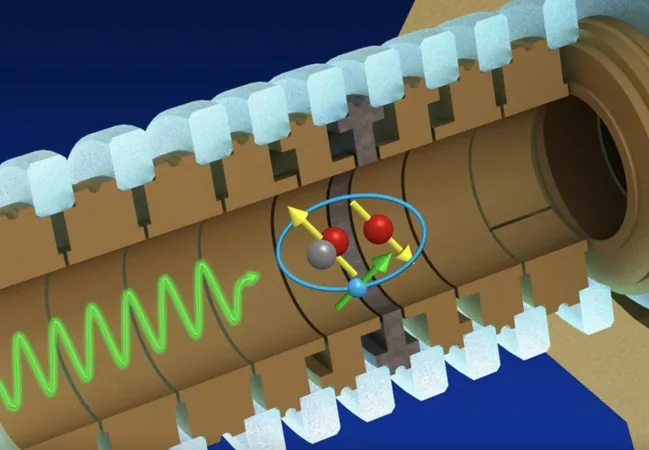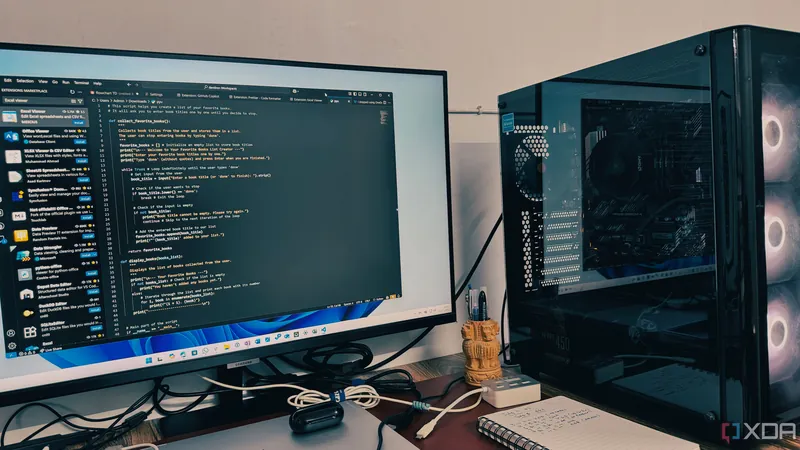
Breakthrough in Quantum Control: New Technique to Manipulate a Single Molecular Hydrogen Ion
2025-05-27
Author: Sophie
Unlocking the Secrets of Molecular Hydrogen Ions
Recent advancements in the realm of fundamental physics have revealed a groundbreaking method to control and measure the rovibrational ground state of a single molecular hydrogen ion (MHI). This remarkable feat not only enhances our understanding of atomic and molecular systems but also provides a powerful platform for testing theoretical predictions.
What are Molecular Hydrogen Ions?
Molecular hydrogen ions, consisting of two hydrogen nuclei and a single electron, boast a more intricate internal structure compared to standard atomic ions. Even at their lowest electronic energy state, these ions can engage in complex rotational and vibrational movements, giving rise to an array of rovibrational states.
A Game-Changing Method from Max Planck Institute
Researchers at the Max Planck Institute for Nuclear Physics have unveiled a novel technique that allows for precise, non-destructive measurement of the rovibrational states of a single molecular hydrogen ion trapped in a Penning trap. This innovative approach promises to pave the way for exciting opportunities in quantum manipulation and measurement.
Charlotte König, the lead author of the study published in *Physical Review Letters*, explained the research’s motivation: to prepare for future comparisons between the molecular hydrogen ion and its antimatter equivalent, H2-. She emphasized the potential applications of their method in analyzing various molecular ions with unpaired electron spins.
How It Works: The Continuous Stern Gerlach Effect
The new measurement technique capitalizes on the continuous Stern Gerlach effect, a phenomenon discovered in the 1980s. By utilizing this effect, the researchers can measure the magnetic moment orientation of single trapped ions without damaging them. König elaborated on the mechanics, explaining how the electron spin orientation correlates with ion motion within a magnetic field of the Penning trap.
One Month of Stability: A Showcase of Precision
König and her team successfully confined the molecular hydrogen ion (HD+) for over a month during their experiments, allowing them to not only detect its internal quantum state but also control its hyperfine state—an essential step towards future antimatter studies.
Implications for Matter and Antimatter Research
These techniques could revolutionize research into antimatter molecular hydrogen ions, opening doors for tests of fundamental symmetries in physics. The implications extend beyond theoretical frameworks, as they may lead to discoveries that challenge the Standard Model of physics.
Looking Ahead: High-Precision Spectroscopy in Quantum Research
König shared plans for applying their methods to high-precision spectroscopy of hydrogen ions, which could shed light on hyperfine and rovibrational structures. This forward-looking research promises to deepen our understanding of the quantum world, potentially leading to groundbreaking revelations in the field.
As we stand on the brink of quantum exploration, this new method represents a significant leap towards unraveling the mysteries of both matter and antimatter.









 Brasil (PT)
Brasil (PT)
 Canada (EN)
Canada (EN)
 Chile (ES)
Chile (ES)
 Česko (CS)
Česko (CS)
 대한민국 (KO)
대한민국 (KO)
 España (ES)
España (ES)
 France (FR)
France (FR)
 Hong Kong (EN)
Hong Kong (EN)
 Italia (IT)
Italia (IT)
 日本 (JA)
日本 (JA)
 Magyarország (HU)
Magyarország (HU)
 Norge (NO)
Norge (NO)
 Polska (PL)
Polska (PL)
 Schweiz (DE)
Schweiz (DE)
 Singapore (EN)
Singapore (EN)
 Sverige (SV)
Sverige (SV)
 Suomi (FI)
Suomi (FI)
 Türkiye (TR)
Türkiye (TR)
 الإمارات العربية المتحدة (AR)
الإمارات العربية المتحدة (AR)